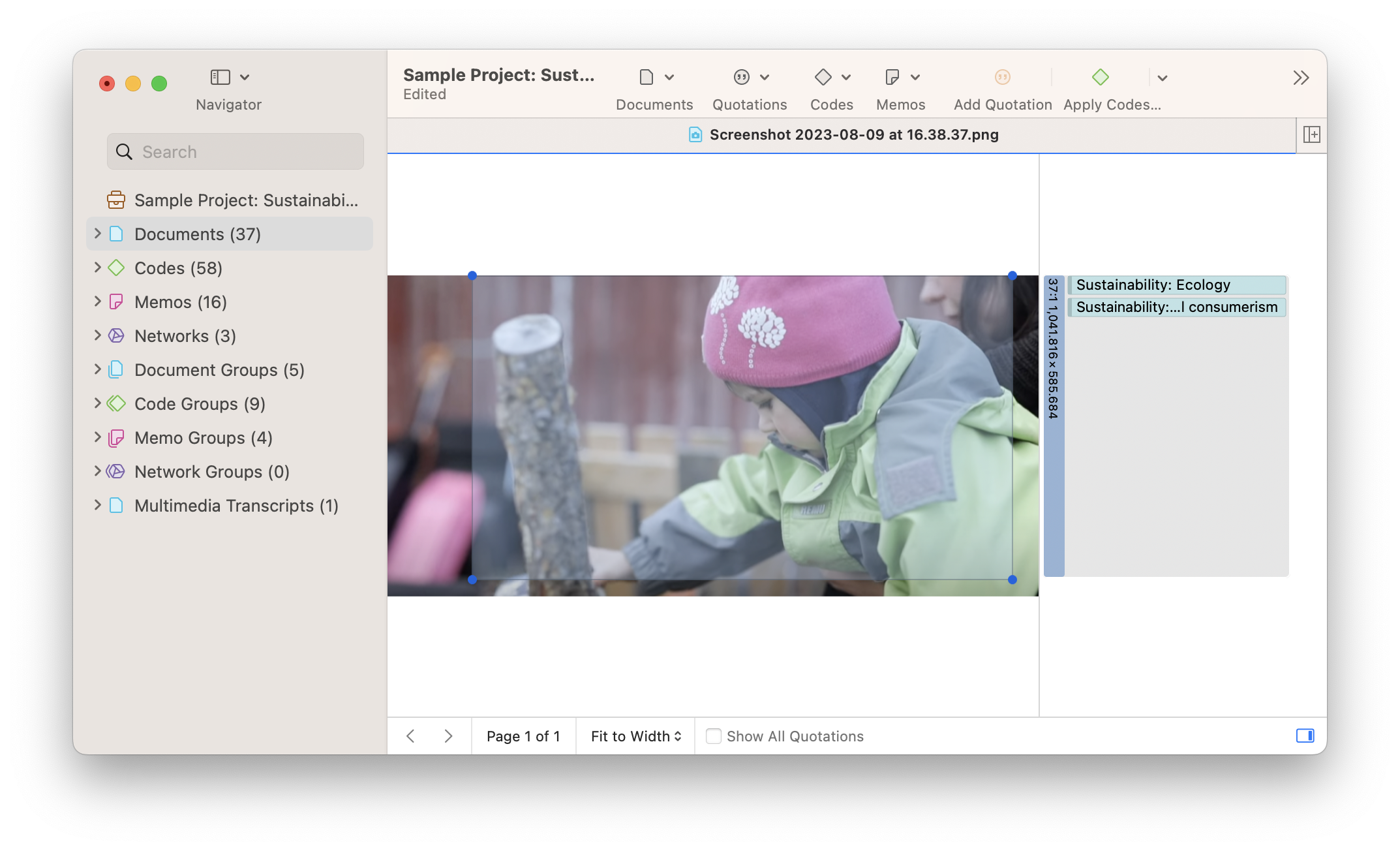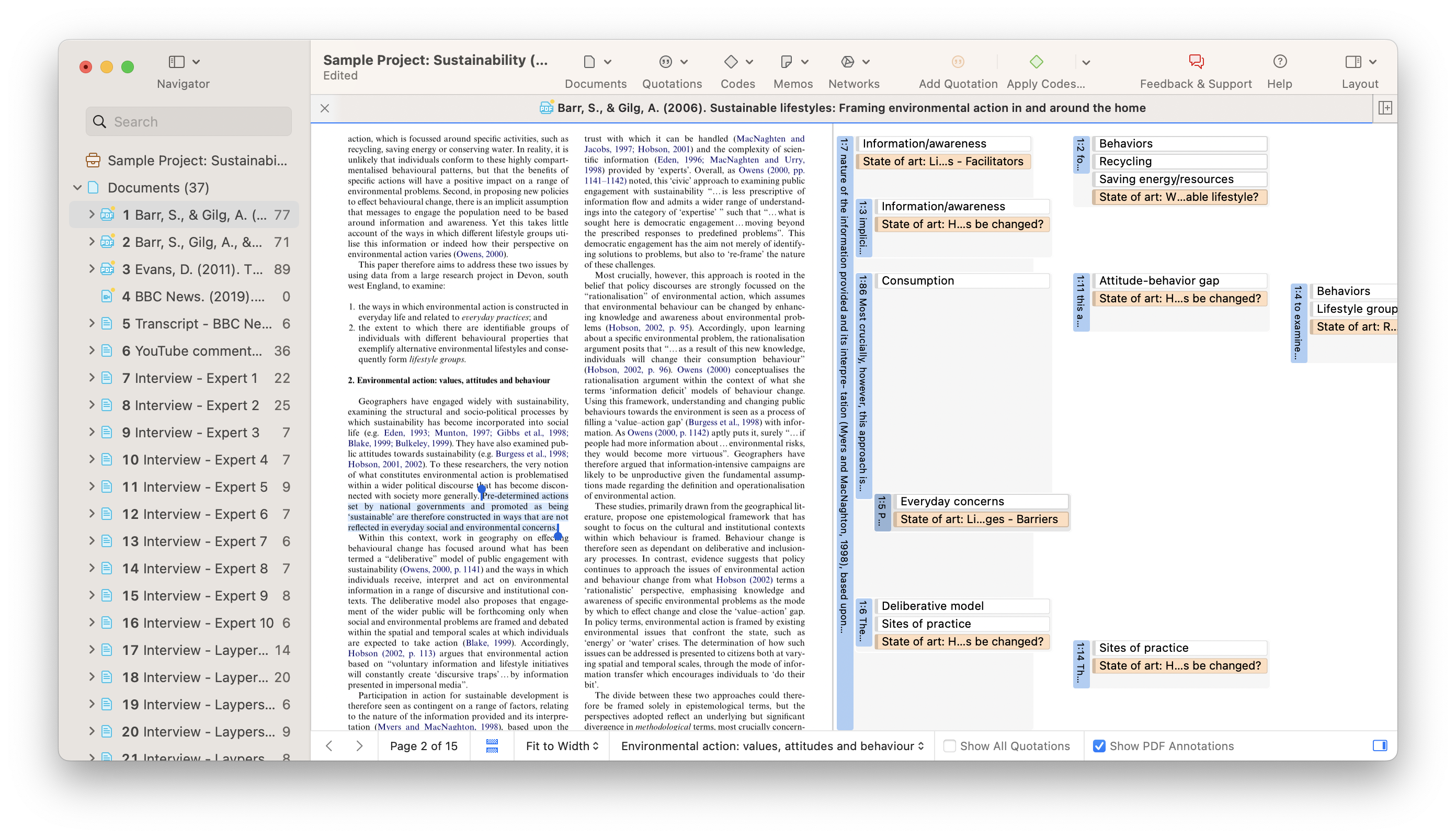- Introduction and overview
- What is qualitative research?
- What is qualitative data?
- Examples of qualitative data
- Qualitative vs. quantitative research
- Mixed methods
- Qualitative research preparation
- Theoretical perspective
- Theoretical framework
- Literature reviews
- Research question
- Conceptual framework
- Conceptual vs. theoretical framework
- Data collection
- Qualitative research methods
- Interviews
- Focus groups
- Observational research
- Case studies
- Surveys
- Ethnographical research
- Ethical considerations
- Confidentiality and privacy
- Bias
- Power dynamics
- Reflexivity
- How to cite "The Ultimate Guide to Qualitative Research - Part 1: The Basics"
Qualitative research methods, types & examples
In the next few sections, we will examine different methods common to qualitative research. Researchers may find the discussion on qualitative research methodologies important to laying the theoretical foundation for common practices in the qualitative research process.

When is qualitative research useful?
Qualitative research methods often contrast with quantitative research methods, which are usually found in the hard sciences such as biology and chemistry. Both orientations are used in the social sciences and behavioral sciences methodology as they contribute to the empirical understanding of scientific knowledge. Quantitative methods tend to measure trends concerning a phenomenon, while qualitative research methods are well-suited to describing a given phenomenon in depth.
Think of how people might choose a smartphone and how many choices there are. The decision could be based on quantitative data, such as the phone's weight, storage size (e.g., how many photos or songs it can hold), and battery life. Customers can decide by comparing the numbers of different models.
On the other hand, the decision could be made based on qualitative data, such as customers' experiences regarding how easy it is to operate a smartphone or how visually appealing a smartphone is. These determinations are challenging to characterize numerically, requiring more extended descriptions to allow people to make reasonable comparisons.
Researchers conduct qualitative research to gather data on and answer questions about intricate social processes that are difficult to quantify. Qualitative methods can be used to conceptualize these processes and develop new theories that shed light on the complex social phenomena in our world.
What is qualitative data?
Qualitative data refers to rich, in-depth, and nuanced information that captures the complexity and diversity of human experiences and social realities. Rather than focusing on quantities or measurements, qualitative data aims to understand the intricate nature of phenomena, uncovering the 'why' and 'how' rather than 'how much.'
It often includes words, descriptions, visual images, symbols, or personal narratives. This data is typically unstructured or semi-structured, featuring open-ended responses that allow for expressive, detailed, and context-specific responses. It explores subjective experiences, individual perceptions, emotions, beliefs, and behaviors in social and cultural contexts.
Qualitative data can reveal patterns, themes, and categories that reflect the depth of participants' experiences and the structures of their world. It can potentially capture unforeseen phenomena, leading to new insights or theories.
Whether collected directly from participants or indirectly from various artifacts or environmental observations, qualitative data provides an understanding of the complex interplay between individuals and their contexts. It aims to provide rich, holistic insights into people's experiences and societal phenomena.
Ultimately, qualitative data offers a rich canvas for researchers to paint a comprehensive and detailed picture of the subject of their inquiry beyond numerical metrics and predefined categories.
What are the different approaches to qualitative research?
The qualitative data collection methods that researchers choose depend on their qualitative inquiry. Qualitative studies take on many forms, with the most common approaches listed below.
Case study research
The case study research approach provides a rich, detailed analysis of a specific 'case,' which can be a single individual, group, event, or organization. Researchers employing this method gather data using multiple sources, such as interviews, observations, and documents, which offer a more complete picture of the case under study. The inherent flexibility of case study research enables the exploration of complex issues in their real-world settings.
Case study research is particularly beneficial when researchers aim to answer 'how' and 'why' questions. It's about digging deep into the aspects often overlooked by other research methods. However, remember that findings from a single case study may not be generalizable to other cases. Some case study designs purposefully include multiple cases in their study design to allow for cross-case comparisons and the development of insights that are more transferable to different cases. Broadly, though, the method's strength lies not in replication but in its depth of understanding and insight.
Ethnographic research
Ethnographic research is a method deeply rooted in cultural anthropology, where the researcher immerses themselves in the everyday life of the group or community they are studying. It involves long-term engagement and close observation of the group, often through participation in their activities. The primary aim is to gain an insider's perspective of the group's social dynamics, beliefs, rituals, and behaviors.
Ethnographic research can be used in various fields, not limited to anthropology. For example, in user experience research, ethnographic methods can be employed to understand user behavior and needs in the context of their natural environment. Nevertheless, conducting ethnographic research requires extensive data collection time and a deep understanding and respect for the culture being studied.
Grounded theory research
Grounded theory research is a qualitative method that seeks to develop a theory rooted in the data. Rather than beginning with a hypothesis, researchers using grounded theory start with an area of study and collect data related to this area. The key feature of this method is its systematic procedure of data collection and analysis, which is designed to facilitate the development of theory that emerges from the data.
The process of grounded theory involves several stages, including open coding, axial coding, and selective coding, which assist in organizing data into categories, establishing relationships among categories, and forming a theoretical framework, respectively. This method is particularly useful when existing theories fail to explain a phenomenon adequately. Nonetheless, conducting grounded theory research requires significant time and analytical effort to ensure that the emerging theory is robust and grounded in the data.
Narrative research
Researchers who focus on narratives are centered on the stories that individuals tell about their experiences and life events. These narratives offer a window into individuals' perspectives, providing insights into their feelings, motives, and actions. Researchers utilizing this method collect narratives through interviews, autobiographies, oral histories, or diaries and analyze them to understand individuals' experiences and how they make sense of their world.

The second part of the narrative research process is the interpretation of these stories. Researchers analyze these narratives not only for their content but also for how they're structured and told, looking for patterns and themes that reveal more profound meanings. However, it's essential to remember that narratives are subjective and can change over time as people reinterpret their experiences and memories. Thus, narrative research provides a rich, nuanced understanding of individual experiences that are closely tied to the context in which the narrative was produced.
Phenomenological research
Phenomenological research focuses on understanding individuals' lived experiences concerning a particular phenomenon. The aim here is to grasp the essence of the experience or the underlying meanings and interpretations that individuals assign to their experiences. This method involves deep, often philosophically-rooted thinking, requiring the researcher to bracket their preconceptions to truly understand the participants' perspectives.
A phenomenological study involves detailed interviews, observations, or diary entries, allowing the researcher to analyze the intricate details of people's experiences and feelings. Analysis of the data seeks to identify themes or essences that capture the nature of the phenomenon under investigation. While phenomenological research can provide profound insights into human experiences, it is a complex and time-consuming process, requiring rigorous analysis and a high degree of reflexivity from the researcher.
Action research
Action research is a collaborative, participatory approach to research that aims to solve real-world problems. In this approach, researchers work closely with community members or stakeholders, who are actively involved in all stages of the research process, from identifying the problem to implementing and evaluating the solution. This makes action research a highly dynamic and iterative process.

This method is usually employed in educational, organizational, or community settings, where researchers and participants learn from each other and effect change together. Action research not only aims to generate knowledge but also to produce practical outcomes and empower participants. Despite its benefits, it requires a significant commitment of time and resources, and its success is dependent on the effective collaboration and active participation of all members involved.
Which approach to qualitative methods is best?
Choosing the best approach to qualitative research depends on various factors, including the nature of the research question, the context of the study, the researcher's familiarity with the approach, and ethical considerations. Here are some guiding questions:
- What is the main purpose of the study?
- What kind of data is needed to effectively answer the research question?
- What is the context in which the research is being conducted?
- What are the ethical considerations associated with each approach?
- Which approach aligns best with the researcher's skills and interests?
Understanding these aspects will allow the researcher to choose the most suitable approach for their particular study.
For instance, a grounded theory approach can be an appropriate choice for your research design when there is little theory to guide the analysis of a phenomenon and the data collection itself. For research in areas that have more guiding theory to help you, you can consider an approach like ethnography or case study research, depending on the scope of data you wish to collect. Finally, if you are conducting research because you are interested in enacting social change, then action research will most likely be the most appropriate approach for your study.
What are the most common qualitative research methods?
Any research method that produces unstructured data can be considered a qualitative research method. However, three types of qualitative methods are commonly used today to conduct data collection.
Observations
The simplest way to study a phenomenon is to look at it. Research conducted through direct observation involves collecting data in field notes, recordings of audio and video, and images for data analysis.
This means that researchers can turn most forms of information into data that can be analyzed with qualitative methods. The illustrative examples qualitative research methods generate can help research audiences understand observed phenomena more clearly. ATLAS.ti can help with this process by allowing qualitative researchers to code major forms of data, including images and audio.

Interviews
Interviews are a fundamental method in qualitative research, allowing researchers to gather in-depth information about individuals' thoughts, feelings, experiences, and interpretations. Interviews can take various forms, from highly structured with predetermined questions, to semi-structured with some guidance, to unstructured or 'open-ended' where the conversation evolves based on the interviewee's responses.
Conducting interviews offers a direct interaction with participants, enabling the researcher to probe deeper into the topics under discussion, clarify responses, and ask for elaborations. Interviews can yield rich, detailed data that provide a deep understanding of a person's perspective. However, they also require a significant investment of time and resources. Skilled interviewing and good rapport building are essential for collecting meaningful and accurate data.
Focus groups
A focus group consists of a group of participants collectively discussing a topic, speaking among themselves even more than they might speak to the researcher or focus group moderator. The aim is to inquire about people's perceptions, opinions, beliefs, and attitudes towards the topic of study, which could be a feature of social life, such as body art or a specific product, such as market research for a new campaign. Since the researcher can observe and speak with a group of people, focus groups are ideal for understanding the social construction of a phenomenon or how meaning is collectively co-constructed.

Focus groups are especially popular in market research. Still, qualitative researchers who want to observe how people interact with each other could consider conducting a focus group. For example, how people discuss their opinions and perspectives in groups is an essential inquiry in sociology and linguistics that focus groups can help explore.
Surveys
Surveys in qualitative research often differ from those in quantitative research, because an important part of these surveys is the collection of open-ended responses that allow participants to provide detailed responses in their own words. Surveys can be a cost-effective and efficient method to collect data from a larger number of participants compared to other qualitative methods.
However, designing a good survey requires careful thought to ensure questions are clear, unbiased, and able to elicit rich, meaningful responses. Unlike interviews and focus groups, surveys do not provide an opportunity for the researcher to ask for clarifications or probe for more elaborate responses. Additionally, low response rates and self-selection bias can be potential challenges in survey research. Regardless, when designed and implemented effectively, surveys can provide valuable insights into participants' perspectives and experiences.
Document collection
Document collection is a versatile method in qualitative research that involves the analysis of existing texts. These texts can come in a variety of forms, such as official documents, newspapers, letters, diaries, transcripts, literary works, photographs, or even digital content like social media posts, blogs, and websites. The content of these documents can provide valuable insights into the phenomenon under investigation, contextual factors, and historical trends.
The strength of document analysis lies in its ability to provide a behind-the-scenes look at events, settings, or groups, often complementing the data obtained through other methods. For example, it can be useful for triangulating data in a mixed-methods study or providing a historical context in a case study. However, the researcher needs to be cautious about the authenticity, bias, and representativeness of the documents. Despite these challenges, when used effectively, document collection can enrich a study by providing a diverse range of data and a deeper understanding of the research subject.
Other research methods
Ultimately, the potential for qualitative data collection is broad as it encompasses any research method that collects unstructured data that can be systematically organized and analyzed. With that in mind, let's briefly look at other methods that are useful in qualitative research.
Participant observation - This is a method used frequently in ethnographic research. Researchers immerse themselves in the environment or culture they are studying, often participating in the activities of the group. This allows them to observe behaviors, interactions, and events as they naturally occur, leading to a deep understanding of the group's dynamics.
Visual methods - These involve the use of visual materials, such as photographs, drawings, videos, or maps. Participants may be asked to create or interact with these materials as part of the data collection process. Visual methods can offer unique insights and are particularly useful when exploring topics that are difficult to express in words.
Diaries and journals - In this method, participants are asked to keep a record of their experiences, thoughts, and feelings over a certain period. These records can provide rich, detailed, and longitudinal data. For example, diaries and journals are often used in health and social care research to study people's daily lives, experiences of illness, or caring roles.
Life history - Collecting life histories is a type of narrative research where participants are asked to tell their life story or focus on a particular aspect or period of their life. Life history can reveal how people interpret and give meaning to their experiences over time.
How do I choose the best qualitative research method?
Think about what you want to study concerning a particular topic or concept. If your topic is education, for example, are you interested in what happens in education, what people think about it, or how people talk about it? Observations can tap into the experiences within a particular context, while interviews and focus groups can shed light on people's opinions.
Also, keep in mind that the use of multiple qualitative research methods can provide a deeper exploration of a concept than the use of one method alone. A good research design for an in-depth qualitative study can even apply quantitative research methods in what is called mixed methods research to examine a phenomenon from different angles.
Any study first begins with the research question and topic. From there, you can reflect on which qualitative research methods are best suited to answering your research question.





